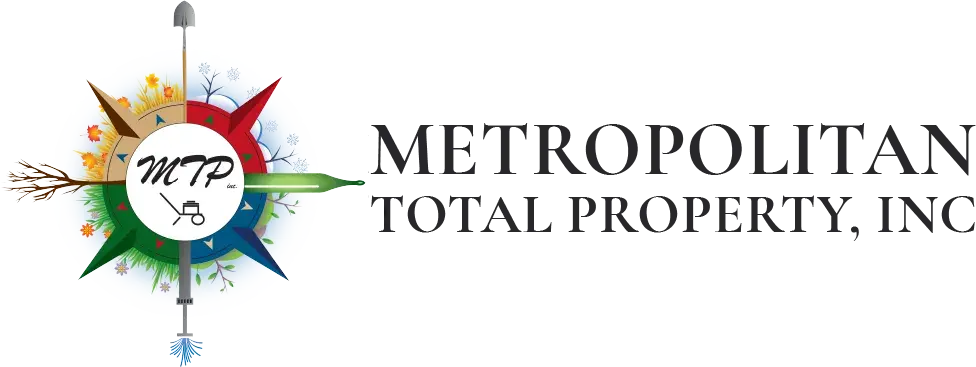Lawn Mowing Tips for Homeowners in Centennial, CO

Keeping your lawn well-manicured is essential for maintaining your home's curb appeal and creating a welcoming outdoor space. In Centennial, CO, where the summers are warm, and the grass grows quickly, regular lawn mowing is a must. To help homeowners in Centennial achieve a beautiful, healthy, green lawn, we've compiled some expert tips to make mowing your lawn a breeze. From choosing the right equipment to proper mowing techniques, these tips will help you keep your lawn looking its best all season long.
Invest in a Quality Lawn Mower
Investing in a high-quality lawn mower is essential for maintaining a healthy and well-manicured lawn. There are several types of lawn mowers that are considered to be of excellent quality and appropriate for optimal mowing practices.
Adjustable cutting height is an important feature to consider in a quality mower. This allows you to customize the length of your grass, ensuring that it is properly maintained and promoting healthy growth. Whether you prefer a shorter cut or a longer, lusher lawn, being able to adjust the cutting height to your desired length is crucial.
Sharp blades are another key attribute of a quality lawn mower. Dull blades can tear the grass instead of cutting it cleanly, which can lead to an unhealthy lawn. Sharp blades not only provide a clean and precise cut, but they also promote good grass health, as torn grass is more susceptible to disease.
Investing in a high-quality lawn mower offers numerous benefits. By maintaining a healthy grass length with an adjustable cutting height, you can improve the overall health of your lawn. A properly cut and well-maintained lawn is more resistant to diseases and pests. Additionally, a quality mower prevents tearing and damage to the grass, resulting in a more aesthetically pleasing lawn.
Set the Right Mowing Height
Setting the right mowing height is crucial for maintaining a healthy lawn. When the grass is cut to an appropriate height, it promotes stronger root growth, leading to a more robust and vibrant lawn. On the other hand, cutting the grass too short can have detrimental effects on the overall health of the lawn.
Firstly, cutting the grass too short can weaken the root system. The longer the grass, the deeper the roots, which allows them to absorb more water and nutrients from the soil. When the grass is cut too short, the roots lose their shade and protection from the sun, leading to increased evaporation and potential drought stress.
Additionally, cutting the grass too short can result in scalping, which is the removal of the top portion of the grass blade. Scalped areas are more susceptible to weed invasion, as the grass cannot compete effectively for resources. Weeds can quickly take over the lawn, choking out the desired grass and creating an unsightly appearance. You may need to use weed control products.
To mitigate these negative effects, mowing more frequently and at a higher setting is beneficial. By mowing more often, you can remove shorter lengths of grass, reducing the stress placed on the lawn. Cutting the grass at a higher setting will also help to shade the soil, preventing weed growth and conserving moisture.
Follow the One-Third Rule
The One-Third Rule is an essential guideline to follow when mowing lawns. It emphasizes the importance of never cutting more than 1/3 of the length of the blade off at a time. By adhering to this rule, one can avoid stressing the turf, scalping the grass, and causing yellowing of the lawn.
Stressing the turf occurs when too much of the blade is removed during mowing. This can lead to weakened roots, making the grass more susceptible to diseases, insects, and drought. Scalping, on the other hand, refers to cutting the grass too short, almost to the soil level. This creates an uneven surface, exposes the soil to excessive sunlight, and increases the risk of weed invasion. Furthermore, repeatedly mowing the lawn too short can result in the yellowing of the grass, as it struggles to produce enough chlorophyll to maintain its vibrant green color.
To follow the One-Third Rule, it is recommended to gradually lower the mower's cutting height every 2-3 days until the grass reaches the desired height. This gradual approach allows the grass to adjust to the new height without undue stress. By doing so, the lawn can maintain a healthy appearance and grow at an optimal rate.
Mow in Different Directions
Mowing in different directions is a crucial technique for ensuring proper turf growth and recovery. This method involves changing the mowing pattern each time you cut the lawn, rather than mowing in the same direction every time. By varying the direction of mowing, you can reap numerous benefits for your lawn.
One of the primary advantages of mowing in alternate directions is that it helps to prevent grass from leaning in one direction. When you consistently mow in the same direction, grass blades have a tendency to lean in that direction. This can lead to an uneven and unattractive lawn appearance. By changing the mowing direction, you encourage upright growth, resulting in a more aesthetically pleasing, uniform lawn.
Additionally, mowing in different directions is an effective way to prevent soil compaction. When you repeatedly mow in the same path, the soil underneath can become compacted. Compacted soil restricts root growth and nutrient absorption, hindering the health of your lawn. By mowing in alternate directions, you distribute the weight and traffic on your lawn more evenly, reducing the chances of compaction and promoting healthier turf growth.
Keep the Mower Blades Sharp
Keeping the mower blades sharp is crucial for effective lawn care in the fall. When the blades are dull, they can tear the leaves of grass instead of cutting them cleanly. This not only gives the lawn an uneven and unkempt appearance but also makes the grass more vulnerable to insect damage and disease.
Dull mower blades can create jagged edges on the grass blades, leaving them more susceptible to infestations by insects such as chinch bugs or diseases like brown patches. These damaged areas provide entry points for pests and pathogens to attack the grass, leading to further damage and potential death of the grass.
Clean Up After Mowing
Proper clean up after mowing is essential for lawn maintenance. It not only enhances the appearance of the lawn but also ensures the overall health of the grass. Failure to clean up after mowing can lead to smothering of the grass by the clippings, preventing proper airflow and sunlight from reaching the turf. This can result in a weak and unhealthy lawn.
To effectively clean up after mowing, follow these simple instructions. First, use a rake to collect the grass clippings that have been left behind. Raking not only removes the clippings but also helps to separate any clumped or tangled grass. It is important to remove these clippings promptly after mowing to prevent them from decomposing and suffocating the grass.
Next, bag the collected clippings for proper disposal or composting. Bagging the clippings ensures that they do not spread across the lawn or become a breeding ground for pests and diseases. Proper disposal of the clippings can be done through a green waste collection service or they can be composted and used as nutrient-rich organic material for other areas of the garden.
Lastly, ensure that any debris or foreign objects - such as branches or stones - are removed from the mowing area. These objects can damage the lawnmower or pose hazards when left on the lawn.
Consider the Weather when Mowing
When it comes to mowing your lawn, considering the weather conditions is of utmost importance for the health and maintenance of your grass. Different weather factors, such as temperature and precipitation, can significantly impact the frequency and timing of mowing.
Firstly, temperature plays a crucial role in determining the growth rate of grass. Typically, grass grows more actively in warmer temperatures. Therefore, during hot weather, you may need to mow more frequently to ensure you maintain an appropriate grass height. On the other hand, during cooler temperatures, grass growth slows down, allowing for a less frequent mowing schedule.
Precipitation also has a significant impact on the timing of mowing. If you mow immediately after rainfall, it can lead to clumping and uneven cutting due to wet grass. Waiting for the grass to dry out is essential to achieve a cleaner and more precise cut.
Mowing in extreme weather conditions can pose risks to both the lawn and the individual operating the mower. High temperatures can cause heat stress, leading to grass damage, while mowing on wet surfaces can result in slippery conditions and accidents.
However, mowing in optimal weather conditions can offer several benefits. Regular mowing removes the top growth of the grass, creating a more even appearance and encouraging denser growth. This promotes overall lawn health, reduces weed growth, and ensures a well-maintained aesthetic.
Hire Metropolitan Total Property to Mow Your Lawn
Are you tired of spending countless hours maintaining your lawn? Look no further than Metropolitan Total Property for all your lawn mowing needs. With our exceptional lawn mowing services, we are the go-to experts for keeping your lawn pristine.
Our lawn care company is committed to delivering top-notch lawn care in Centennial and the surrounding cities. Our team of professionals is equipped with the knowledge and expertise to handle all aspects of lawn mowing, ensuring that your lawn looks its best all year round. They are well-versed in the latest techniques and methods to ensure that your lawn is mowed to perfection.
